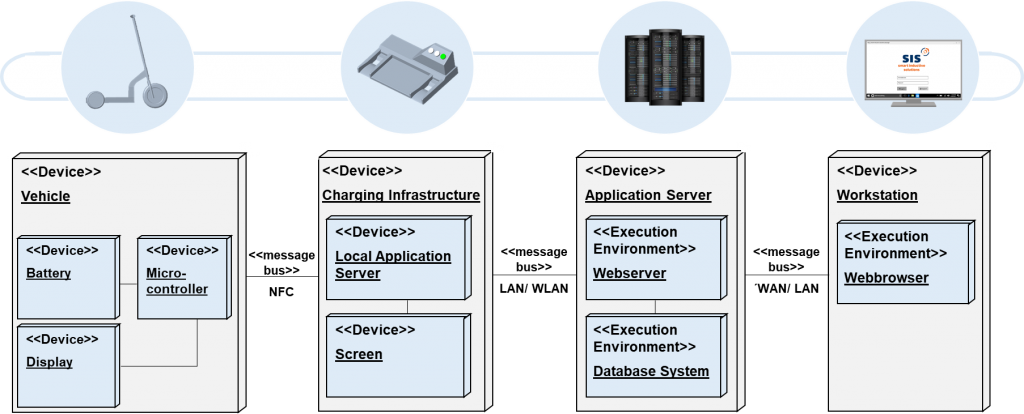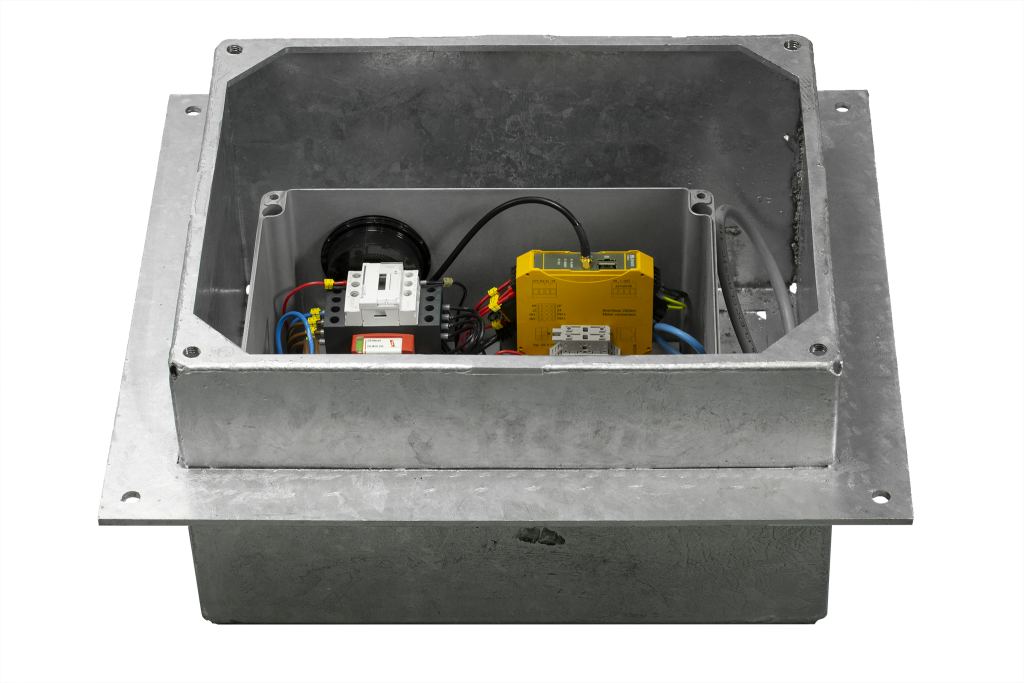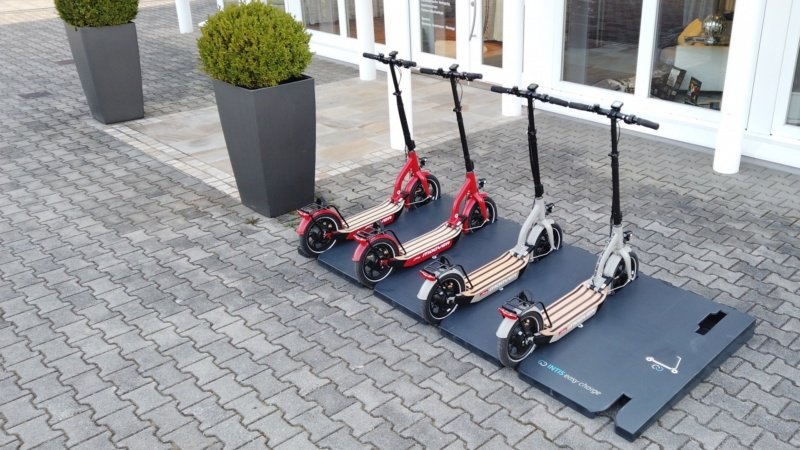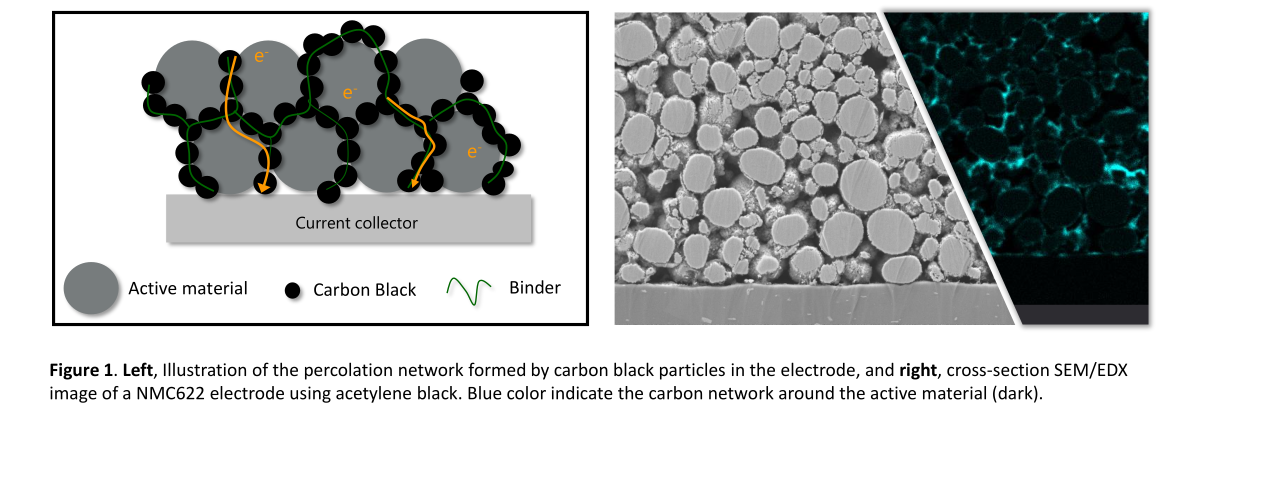Presented by Richard Gould at INTIS with guest commentary from the University of Duisburg Essen and Connected Kerb
A lot has been written on the possibilities that electric mobility offers. In particular, micro mobility has been in the news a lot lately, especially with the current pandemic. We are presented with a vision where electric scooter and e-bike sharing will revolutionise public transportation, eliminate cars in urban spaces and create green and pleasant cities.
However, the infrastructure perspective is often missing from this narrative, despite accessible, smart charging offering huge potential to make electric, shared mobility more convenient, more environmentally friendly and more cost effective.
Thinking differently
With personal internal combustion engine cars, we are all used to thinking a certain way about mobility. We drive until the tank is empty, fill up, and carry on. Except on long trips or for frequent drivers, filling up happens maybe once a week. Electric mobility forces a change in thinking, as now the vehicle is filled up when not in use, so you start the ride with a “full tank”.
Shared micro mobility requires a further change. Now the vehicle is used much more frequently, and charging is the necessary annoyance that allows the user to do what they actually want, namely to be mobile. The vehicle is usually charged fully then used until empty, at which point it stands useless until it is charged again. For public sharing, dedicated personnel are required to organise charging or swap batteries. In private sharing, the user is required to invest their time finding a suitable place to plug in. A lot of activity in the background is needed to give the user that effortless ride.
However, we at INTIS envisage smart infrastructure replacing that activity in the background. This requires accessible charging infrastructure allowing automatic opportunity charging, coupled with good use of data and communications. In this scenario, neither the user nor the operator needs greatly concern themselves with making sure the vehicle gets its energy because that is taken care of by the infrastructure solution.
Smart services provide solutions, not just technology – commentary by the University of Duisburg-Essen
One area where the potential of electromobility is becoming apparent is in intralogistics, although this potential is often inhibited by incorrect usage behaviour. Vehicles are plugged in to charge as often as possible to minimise down-time. This high charging frequency may be suitable for lithium-ion batteries, but it drastically reducing the lifetime of lead-gel batteries which are still very common in industry. Even worse, fleets and equipment are not usually updated all at once, meaning a mix of battery types ends up being charged the same way by the same equipment. This leads to a high replacement rate with associated materials, time, and overhead costs.
The solution is smart charging in connection with a fleet management system, where the charging infrastructure identifies the vehicle and battery type, connects to the fleet management system and determines the optimal charging behaviour based on stored information and historic usage patterns. These usage patterns provide information about the expected duration and distance of the next drive, based on daily driving patterns, which allow the smart charging application to calculate whether the battery level is sufficient or the battery needs to be charged. The availability of good data to develop relevant information is crucial to the efficacy of smart charging.
Smart charging – a real world application

The project Smart Inductive Solutions, a spin-off of the university Duisburg-Essen in Germany, is developing a system to address this issue. A data-driven approach is used to focus on value propositions for the individual customer, with very promising results coming from first tests currently running under real-world conditions. The gathering, transmission, and evaluation of required data in combination with wireless charging are key components of the project. The system consists of several core sub-systems, principally the charging infrastructure, the application server and multiple client workstations, as displayed in figure 2. Besides providing energy, the charging infrastructure provides bidirectional communication between the vehicles and the back end. When a vehicle is parked, the charging infrastructure identifies this vehicle and loads the applicable battery data from the application server. The application server keeps track of each charging process and determines whether and how a vehicle should be charged. Data about vehicle status, battery health, battery state of charge, etcetera, is accessible on the application server from any device with a network connection.

The advantages of wireless charging
Smart charging combined with wireless charging technology can make electric micro mobility and intralogistics applications more usable, more environmentally friendly and more cost effective.
In order to illustrate the potential, a logistics use case from the field of intralogistics is drawn upon: Employees are under a certain amount of time pressure and electric scooters are used for faster movement in the warehouses. Charging time is very limited and to take account of these special circumstances, a good data-set on battery consumption and charging time is essential to control charging cycles correctly. Wireless smart charging allows the employees to just park the scooters and continue with their assignment. The charging system takes care of the rest, deciding based on historical values and the battery type whether and to what parameters charging need take place. The next time a vehicle is required, the user is guided to an appropriate vehicle, meaning that battery condition and vehicle wear and tear across the fleet are optimised.
Altogether, uptime is maximised with the user always having the mobility they required, while the vehicle is maintained in the best possible condition. Costs for replacement parts can be minimised and maintenance can be carried out in a planned way, thanks to condition monitoring of the vehicles and charging infrastructure. This allows the full potential of electric mobility to be harnessed.
Smart Inductive Solutions will complete an evaluation phase with two pilot customers this year, with services able to be purchased from the beginning of 2021. Other use cases for smart inductive charging include micro mobility in public areas and delivery drones
Ubiquitous access to infrastructure
No one worries about finding a road to drive to work or an electrical connection for their fridge. The infrastructure in those cases is ubiquitous and accessible. In order for infrastructure to truly support and enable electric vehicles it needs to be smart, but it also needs to be available where the customer needs it and accessible. In most cases infrastructure is, in fact, available; electricity and communications lines run under most streets in urban and suburban areas, and even outside of urban areas, electricity and communications infrastructure is never far away. Accessibility is the challenge, namely getting the necessary interfaces in place between the readily available infrastructure and the new EV customers who are now appearing. Additionally, it is not this interface, or the charging infrastructure, which prove the main expense and administrative hassle, but rather the civil engineering, works and organisation. This can be greatly reduced if interfaces are built into the roads, housing, and industrial estates during construction or scheduled maintenance, rather than as an add on afterwards.
Enabling future smart cities, today – commentary by Connected Kerb
Connected Kerb is a British start-up that has taken an innovative and future-proofed approach to developing and delivering smart cities technology. The company provides electric vehicle charging infrastructure solutions that enable future communities through connectivity. Its system is a smart cities platform that integrates both power and data at the kerbside to support electric, connected, and autonomous vehicles, as well as the deployment of advanced IoT technologies. With a focus on inclusivity, Connected Kerb’s vision is to create sustainable, future-proofed, and connected environments for all those within our society.
Founder and Director of Innovation, Stephen Richardson explains that what differentiates Connected Kerb from traditional charge point vendors is that its technology is a two-part solution of flexible below-ground (power and data) infrastructure and an advanced charging and smart cities hardware solution.
This solution is comprised of a Power & Data Pack that is sunk beneath the pavement and housed in a Node Box, and the visible, above-ground charge point socket and sensors. The components of the subterranean Node Box provide access to both power and data at the kerbside, which in turn enables and manages not only smart EV charging, but also provides a neutral platform for an array of different smart cities technologies.

Figure 3 – Node box
Richardson highlights that the aim in deploying a unique system such as this, is to deliver both flexibility and longevity. It enables upgrading over time (the system is modular and able to integrate new technologies) while also delivering a far broader value proposition than purely EV charging (multiple infrastructure projects in one single infrastructure solution), therefore providing value to a much broader cross-section of users than solely EV drivers.
Once the Connected Kerb Node Box is installed it becomes a neutral host for a range of technologies, such as 5G, connected and/or autonomous vehicles and mobility services. Its connectivity allows for more effective management of EV chargers in real time (key for load management) and supports the many ambitions of smart cities.
With current challenges considered, governments are under immense fiscal pressure, as well as increasing accountability for environmental commitments. Connected Kerb’s unique solution offers an integration of flexible innovations that is both cost-effective and scalable, allowing city planners to prepare for the future, while delivering for the present. For more information see https://youtu.be/DKKMaKC5vYk
The future of EV infrastructure
Available, accessible, smart, and automatic charging infrastructure offers huge potential to transform transportation.
Having ubiquitous interfaces to power and communications allows charging infrastructure to be turned into a commodity. Sharing stations for electric scooters or bikes can be installed at low cost and moved as demand and usage patterns change. Batteries or renewable energy sources can be installed to help deal with grid weaknesses. EV charging stations can be installed and operated at a fraction of the cost previously associated with these technologies.

Smart charging and fleet management allows electric vehicles to have a higher up-time while also reducing wear and tear. Battery state of charge can be maintained at optimum levels, avoiding complete discharge or charge cycles which stress battery technology, meaning batteries last longer. Historic usage patterns and even weather data can be utilised. For example, if there is a week of rain and cold weather ahead, it is likely that shared scooters will not be used, so the state of charge can be set to conservation levels. However, if a long weekend ahead promises perfect weather, the scooters can be charged up to full to prepare for the expected surge in demand.
Inductive charging with its automatic hands-free process, no wear and tear and ability to be seamlessly integrated into the landscape provides the final piece to the puzzle.
At INTIS, we envisage a future infrastructure which is seamless, invisible, and automatic. A customer picks up an electric scooter from a charging station integrated into the pavement. The vehicle assigned to them has the correct state of charge to complete their trip and was chosen because its battery has experienced a lower number of charging cycles than other available options. The customer makes their way to their destination; already, a charging slot has been reserved for the vehicle and another trip has been lined up after a planned 20 minutes of charging to top up the battery. The customer reaches their destination and parks the scooter at another charging station in front of the train station, at which point the opportunity charging process is immediately and automatically started. At no point has the customer or the operator had to think about the energy needed to travel; the whole process is effortless.
Infrastructure like this not only enhances the experience for the user, it reduces costs for the operator as well, both by reducing maintenance and increasing the longevity of the vehicle. Looking to the future of electric vehicles, this kind of infrastructure also allows battery capacity to be reduced, further saving both money and resources.
Throughout the history of technology, each progressive step has involved greater use of resources and energy. The results of this are clear to everyone. Electric vehicles powered by renewable energy generation and enabled by smart infrastructure have the potential to buck this trend, providing truly sustainable mobility.
Presented by Richard Gould at INTIS with guest commentary from the University of Duisburg Essen and Connected Kerb







